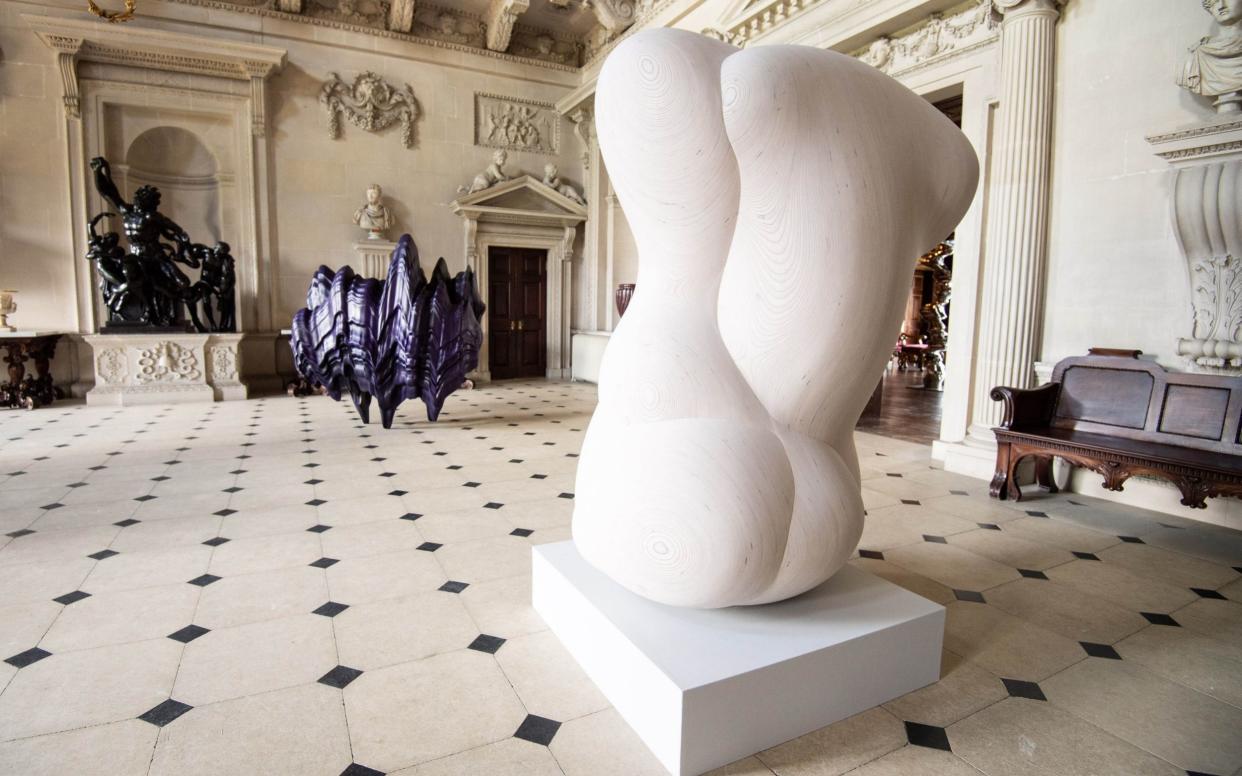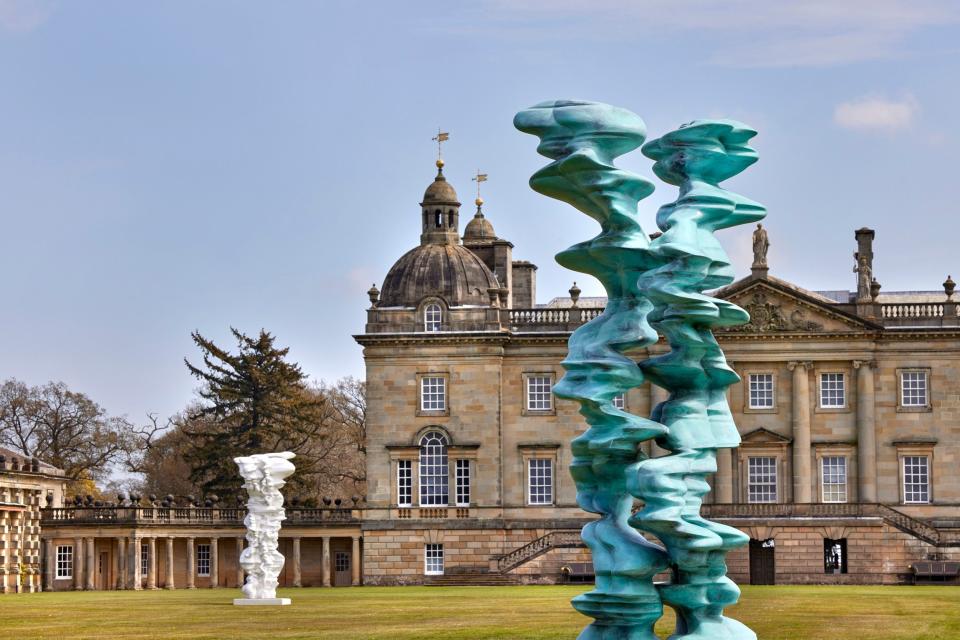Tony Cragg brings a thrilling disorder to the Palladian symmetry of Houghton Hall

- Oops!Something went wrong.Please try again later.
- Oops!Something went wrong.Please try again later.
- Oops!Something went wrong.Please try again later.
In recent years, Lord Cholmondeley has attempted to turn his family seat – Houghton Hall in Norfolk – into a destination for lovers of modern and contemporary art. He has held solo shows by the likes of Damien Hirst (in 2018), Henry Moore (in 2019) and Anish Kapoor (in a Covid-curtailed 2020). This year, it’s the turn of the eminent British sculptor, Tony Cragg.
As ever, works have been placed both inside the house and about the grounds. In truth, Houghton itself – the stunning Palladian mansion built for Sir Robert Walpole in 1722 – is always the star. No artist can compete with it; all he or she can do is complement, enhance or subvert the surroundings. How does Cragg fare? Overall, pretty well.
Now 72, he’s a master at using the traditional material of bronze in fresh ways. Located on the grass just behind the house is Ferryman (2001), its surface punctured with holes revealing a void within. The sculpture resembles a wild beast on its hind legs, howling – its sound would surely disturb the Lord’s herd of English Longhorn cows grazing not far off.
Even from this one sculpture, it becomes clear that, of the three options cited above, Cragg’s plan is to subvert the surroundings. Standing nearby, Mean Average (2018) is a giddy interweaving of top-heavy columns. As so often with Cragg, it almost seems to defy gravity. The difference is marked between these columns and the Classically-inspired examples on the house’s rear façade.
Here, in fact, lies the key to the whole exhibition’s success. Where Palladian architecture is all about balance, harmony and symmetry, Cragg has made a career out of quasi-abstract sculptures with irregular forms.
He has curated this show himself, remotely, liaising with Lord Cholmondeley via Zoom from his home in Germany. It features 12 sculptures outdoors and 18 indoors – including two new works made specifically for Houghton. (One of these, tucked away behind a hedge and as yet untitled, owes a debt to Jean Arp and resembles a pair of lovers in a clinch).

The most eye-catching work is Runner (2015). Painted green, it stands several metres tall and boasts a zigzagging form that suggests someone moving at speed. Its positioning is crucial: some way down the long, perfectly straight, grass avenue which stretches two miles from the rear of the house to the horizon.
Most sculptors would have wanted to place a work in the centre of that avenue, so as to guarantee a pleasing view. Cragg, however, has deliberately placed Runner off centre. He’s that sort of artist.
It must be said that the works indoors don’t work particularly well, bunched into just two downstairs rooms (the Stone Hall and the Saloon) almost as an afterthought.
Perhaps I’m also slightly more enthusiastic than I might have been in any other year. But, after lockdown, the chance to see art again – and to be in the beautiful outdoors again – is thrilling. You won’t be disappointed.
May 19 to Sept 26. Tickets must be pre-booked online: houghtonhall.com

